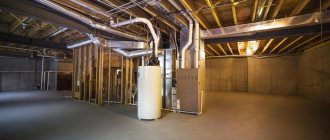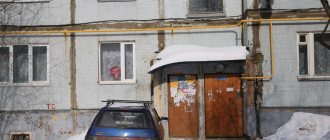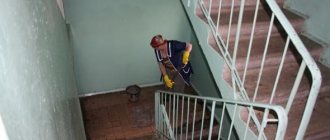How is common property in an apartment building managed?
Lawyer Antonov A.P.
In accordance with Art. 209 of the Civil Code of the Russian Federation, the owner has the rights to own, use and dispose of his property. The owner has the right, at his own discretion, to take any actions in relation to his property that do not contradict the law and other legal acts and do not violate the rights and legally protected interests of other persons, including alienating his property into the ownership of other persons, transferring to them, while remaining the owner, the rights possession, use and disposal of property, pledge property and encumber it in other ways, dispose of it in any other way. The owners of apartments in an apartment building own, by right of common shared ownership, the common premises of the house, the load-bearing structures of the house, mechanical, electrical, sanitary and other equipment outside or inside the apartment that serves more than one apartment (clause 1 of Article 290 of the Civil Code of the Russian Federation). The list of common property in an apartment building belonging to the owners of premises in an apartment building on the right of common shared ownership is determined by Art. 36 of the Housing Code of the Russian Federation and clauses 2 - 9 of the Rules for the maintenance of common property in an apartment building, approved by Decree of the Government of the Russian Federation of August 13, 2006 N 491. By virtue of Part 2 of Art. 36 of the Housing Code of the Russian Federation, the owners of premises in an apartment building own, use and, within the limits established by the Housing Code of the Russian Federation and civil legislation, dispose of the common property in the apartment building. According to Art. 246 of the Civil Code of the Russian Federation, the disposal of property in shared ownership is carried out by agreement of all its participants. Provided for in Part 2 of Art. 36 of the RF Housing Code, the right of owners of premises in an apartment building to own, use and dispose of common property in an apartment building cannot be interpreted as allowing one owner to violate the same rights of other owners, and to oppose the interests of one owner to the interests of other owners (clause 23 of the Review of Judicial Practice Supreme Court of the Russian Federation No. 1 (2017), approved by the Presidium of the Supreme Court of the Russian Federation on February 16, 2017). Issues of disposing of the common property of an apartment building fall within the competence of the general meeting of owners of premises in an apartment building (Part 2 of Article 44 of the Housing Code of the Russian Federation). The Ruling of the Supreme Court of the Russian Federation dated October 29, 2018 N 307-ES18-16531 in case N A56-59412/2017 reflects the position according to which the decision on the procedure for use, disposal, collection of fees for the placement of objects on the common property of an apartment building and its size is documented in a protocol of the general meeting of owners of premises in an apartment building and is within its exclusive competence. Decisions of the general meeting of owners of premises in an apartment building on issues put to vote are adopted by a majority vote of the total number of votes of the owners of premises in an apartment building participating in this meeting or by a majority of at least two-thirds of the total number of votes of owners of premises in an apartment building, in depending on the content of the issue put to vote (Part 1 of Article 46 of the RF Housing Code). Decisions made by the general meeting of owners of premises in an apartment building, as well as voting results, are brought to the attention of the owners of premises in this building by the owner specified in Art. 45 of the Housing Code of the Russian Federation by another person, on whose initiative such a meeting was convened, by posting a corresponding message about this in the premises of this house, determined by the decision of the general meeting of owners of premises in this house and accessible to all owners of premises in this house, no later than ten days from the date of adoption of these decisions (Part 3 of Article 46 of the RF Housing Code). By decision of the owners of premises in an apartment building, adopted at a general meeting of such owners, common property in an apartment building can be transferred for use to other persons if this does not violate the rights and legitimate interests of citizens and legal entities (Part 4 of Article 36 Housing Complex of the Russian Federation). If a decision is made to provide the common property of an apartment building to a third party, the management body of the apartment building concludes a lease agreement with the third party in the manner established by the Civil Code of the Russian Federation. By virtue of clause 2 of Art. 651 of the Civil Code of the Russian Federation, a lease agreement for a building and structure concluded for a period of at least one year is subject to mandatory state registration.
Still have questions for your lawyer?
Ask them right now here, or call us by phone in Moscow +7 (499) 288-34-32 or in Samara +7 (846) 212-99-71 (24 hours a day), or come to our office for a consultation (by pre-registration)!
State Housing and Construction Supervision Service of the Irkutsk Region
4) Checking the serviceability of sewer hoods.
5) Checking the presence of draft in the smoke ventilation ducts.
6) Coating with red lead putty on fistulas, sections of steel roof ridges, etc.
7) Checking the grounding of the electrical cable sheath, measuring the insulation resistance of wires in public places.
Inspection of fire alarms and extinguishing agents in houses.
9) Cleaning basements and attics of debris.
10) Checking the integrity and, if necessary, restoring locking devices in basements, garbage chambers, attics, technical rooms, etc. doors.
Note: Time limits for troubleshooting problems that arise
2. Work performed in preparing residential buildings for operation in the spring and summer
1) Strengthening drainpipes, elbows and funnels.
2) Removing the springs on the entrance doors.
3) Preservation of the central heating system.
4) Repair and painting of equipment for children's and sports grounds.
5) Construction of an additional network of watering systems.
6) Strengthening flag holders.
7) Inspection, minor repairs, glazing of door and window openings and sealing of vents.
3. Work performed in preparing residential buildings for operation in the autumn-winter period
1) Insulation of window and balcony openings in common areas.
2) Replacement of broken glass windows and doors in common areas.
3) Insulation of attic floors.
4) Insulation of pipelines in attics and basements.
5) Strengthening and repairing parapet fences.
6) Checking the serviceability and minor repairs of dormer windows and blinds.
7) Manufacturing new or repairing existing walking boards and walkways in attics.
Adjustment and testing of central heating systems.
9) Insulation and cleaning of common building ventilation ducts.
10) Checking the condition of the vents in the basements of buildings and their insulation.
11) Repair and insulation of external water taps and standpipes.
12) Repair and strengthening of entrance doors.
13) Installation of door springs.
4. Work performed during partial inspections
1) Coating ridges and fistulas in places of roof leaks with red lead putty or other mastic.
2) Checking the presence of draft in smoke and ventilation ducts and flues.
3) Changing gaskets in water taps of common house systems.
4) Cleaning of internal sewer risers.
5) Packing of seals in valves, taps and gate valves of common house systems and the first shut-off devices located on branches from risers.
6) Strengthening pipelines.
7) Checking sewer hoods.
Minor insulation repairs.
9) Ventilation of wells.
10) Changing burnt-out light bulbs in staircases, technical undergrounds and attics.
11) Elimination of minor electrical wiring faults in common areas.
12) Change (correction) of plug sockets and switches in common areas.
Note: Time limits for troubleshooting problems that arise
5. Other work
1) Adjustment and commissioning of central heating systems.
2) The same ventilation.
3) Flushing and pressure testing of the central heating system.
4) Cleaning and flushing of water taps of common building communications.
5) Adjustment and setup of automatic control systems for engineering equipment.
6) Landscaping of the territory, care of green spaces.
7) Removing snow and ice from roofs and canopies.
Cleaning and tidying up the local area.
9) Cleaning of utility and auxiliary premises (except for apartments and rented premises).
10) Washing windows, floors, flights of stairs, landings, walls, removing dust in staircases.
11) Removal of garbage from the building and its removal.
12) Cleaning and washing of waste chutes and their loading valves.
13) Cleaning the roof of debris, dirt and leaves.
14) Mowing grass, trimming hedges and loosening the soil in the local area.
15) Changing window and door fixtures in common areas.
16) Sanitation of basements.
Notes: Time limits for troubleshooting problems that arise. Frequency of cleaning work
II. Current repairs (common areas)
1. Foundations
1) Sealing and filling of seams, cracks, restoration of cladding of wall foundations, etc.
2) Elimination of local deformations by repositioning, strengthening, etc.
3) Punching (sealing) holes, sockets, grooves.
4) Strengthening (arrangement) of foundations for equipment (ventilation, pumping, etc.).
5) Changing individual sections of strip, pillar foundations or chairs under wooden buildings.
6) Installation and repair of ventilation ducts.
7) Change or repair of the blind area.
Restoration of pits, entrances to basements.
9) Restoration of damaged areas of the foundation.
2. Walls and facades
1) Seal cracks, fill joints, relay individual sections of brick walls.
2) Sealing the joints of elements of prefabricated buildings, sealing potholes and cracks on the surface of blocks and panels.
3) Punching (sealing) holes, sockets, grooves.
4) Restoration of individual walls, lintels, cornices, ebbs.
5) Changing individual crowns, frame elements, strengthening, insulation, caulking of grooves, changing sections of wooden wall cladding.
6) Insulation of freezing sections of walls in individual rooms.
7) replacement of coatings and protruding parts along the facade. Replacing drains on window openings.
Restoration of areas of plaster and cladding, moldings.
9) Repair and painting of facades. Repair and painting of plinths.
H. Floors
1) Temporary fastening of floors.
2) Partial replacement or strengthening of individual elements of wooden floors.
3) Sealing potholes and cracks in reinforced concrete structures.
4) Insulation of the upper shelves and steel beams in the attic. Painting beams.
5) Sealing seams and cracks.
4. Roofs
1) Strengthening the elements of a wooden rafter system, including changing individual rafter legs, racks, struts, sections of ridge purlins, beds, mauerlats, fillies and sheathing.
2) Antiseptic and fire protection of wooden structures.
3) All types of work to eliminate malfunctions of steel, asbestos-cement and other roofs made of piece materials (except for complete replacement of the coating), including all elements adjacent to structures, parapet coverings, caps and umbrellas over pipes, etc.
4) replacement of drainpipes and their elements.
5) Partial repair of roll roofing with replacement of individual sections.
6) Complete replacement of the top layer of rolled carpet with partial replacement of the underlying layers.
7) replacement (restoration) of individual sections of non-roll roofing (made of piece material and metal).
Installation or restoration of the protective and finishing layer of rolled and non-rolled roofs.
9) Replacement of sections of parapet gratings, fire escapes, stepladders, sleeves, fences, anchors or radio stands, building grounding devices with restoration of the waterproofness of the attachment point.
10) Restoration and installation of new transitions to the attic through heating pipes and ventilation ducts.
11) Restoration and repair of valleys, ridges and eaves ventilation ducts.
12) Repair of waterproofing, vapor barrier and restoration of the insulating layer of the attic covering.
13) Repair of dormer windows and roof exits.
14) Equipment for stationary devices for attaching safety ropes.
5. Window and door fillings
1) Replacement, restoration of individual elements, partial replacement of window and door fillings related to common property.
2) Installation of spring closers, stops, etc.
6. Partitions related to common property.
1) Strengthening and replacing individual sections of wooden partitions.
2) repairing cracks in slab partitions, re-lining individual sections of them.
3) Improving the soundproofing properties of partitions (sealing connections with adjacent structures, etc.).
7. Stairs, balconies, porches (umbrellas-visors) above the entrances to the entrances, basements, above the balconies of the upper floors
1) Filling potholes, cracks in steps and platforms.
2) Replacement of individual steps, treads, risers.
3) Partial replacement and strengthening of metal railings.
4) The same elements of stairs.
5) Sealing potholes and cracks in concrete and reinforced concrete balcony slabs, porches, umbrellas; replacement of plank flooring with steel roofing, replacement of balcony grilles.
6) Restoration or replacement of individual elements of the porches; restoration or installation of umbrellas over the entrances to the entrances, basements and over the balconies of the upper floors.
7) Installation of metal bars and window barriers above the entrances to the basement.
8. Floors related to common property.
1) Replacement of individual sections of flooring in common areas.
2) replacement (installation) of waterproofing of floors in individual sanitary facilities with a complete change of covering.
9. Interior decoration
1) Restoration of plaster walls and ceilings in separate places. Restoration of wall and floor coverings with ceramic and other tiles in separate places in auxiliary rooms (staircases, basements, attics), in common areas in dormitories (except for work to be performed by employers, tenants and owners in accordance with concluded agreements).
2) All types of painting and glass work in auxiliary premises (staircases, basements, attics), in common areas in dormitories (except for work to be performed by employers, tenants and owners in accordance with concluded agreements).
3) Restorative repair of damage caused in connection with the elimination of emergency situations.
10. Central heating
1) Change of individual sections of pipelines, sections, heating devices, shut-off and control valves related to common property.
2) Installation (if necessary) of air valves.
3) Insulation of newly laid pipelines, devices, expansion tanks, ramps.
4) Relaying, lining of hogs, chimneys.
11. Ventilation
1) Changing individual sections and eliminating leaks in ventilation ducts, shafts and chambers.
2) Replacement of fans, air valves, and other equipment in common areas.
12. Water supply and sewerage, hot water supply (in-house systems)
1) Replacement of individual sections of pipelines, sealing of connections, elimination of leaks, strengthening and insulation of newly laid pipelines, hydraulic testing of the system.
2) Change of individual water taps, faucets, showers, sinks, sinks, washbasins, toilets, bathtubs, shut-off valves in common areas, including the first shut-off device located on the branch from the risers.
3) Insulation and replacement of fittings for water tanks in the attic.
4) Replacement of internal fire hydrants.
5) Repair of pumps and electric motors, replacement of individual pumps and low-power electric motors.
6) Installation, replacement and restoration of functionality of individual elements and parts of elements related to common property.
13. Electrical devices
1) Replacement of faulty sections of the building’s electrical network, excluding the electrical networks of residential apartments.
2) Replacement of lamps in common areas of buildings.
3) Replacement of fuses, circuit breakers, batch switches of input distribution devices, switchboards. 13.4.3 replacement and installation of photo switches, time relays and other devices for automatic or remote control of lighting in common premises.
4) replacement of electric motors and individual components of electrical installations of engineering equipment of the building.
5) Repair of stationary electric stoves included in the common property.
14. Special common house technical devices
Replacement and restoration of elements and parts of elements of special technical devices according to regulations established by manufacturers or authorized federal executive authorities.
15. Garbage chutes
Restoring the functionality of ventilation and flushing devices, waste collection valve covers and gate devices and other waste chute elements.
16. External landscaping
Repair and restoration of destroyed sections of sidewalks, driveways, paths, fences and equipment for sports, utility and recreation areas, platforms and sheds for waste containers. Replacement of sports ground equipment.
17. Internal gas supply system
Installation, replacement and restoration of functionality of in-house gas equipment that is part of the common property of the house.
Notes: Time limits for troubleshooting problems that arise
Frequency of cleaning work
Emergency dispatch service
1. Sanitary equipment
1.1. Elimination of emergency leaks in water taps, in the taps of flush tanks in toilets.
1.2. Elimination of emergency faults of pipelines and their connections (with fittings, fittings and devices for water supply, sewerage, hot water supply, central heating).
2. Electrical equipment
2.1. Elimination of damage to one of the cables supplying a residential building. Disabling the power supply system of residential buildings or power electrical equipment (if there are cable switches at the entrance to the house - during the time required for the arrival of personnel servicing the house).
2.2. Elimination of malfunctions in the water distribution device associated with the replacement of fuses, circuit breakers, switches.
2.3. Troubleshooting circuit breakers for risers and supply lines.
2.4. Elimination of emergency faults (short circuit in electrical network elements, etc.).
2.5. Troubleshooting an electric stove with failure of one burner and oven.
2.6. Troubleshooting an electric stove by turning off the entire electric stove.
3. Emergency work performed on weekends and holidays
Walls
3.1. Loss of connection between individual bricks and the masonry of external walls, threatening their loss (immediate fencing of the danger zone).
Interior and exterior decoration
3.2. Peeling of the plaster of the ceiling or the upper part of the wall, threatening the collapse of the wall (immediately take safety measures).
3.3. Violation of the connection between the external cladding, as well as stucco products installed on the facades with the walls (immediate adoption of safety measures).




